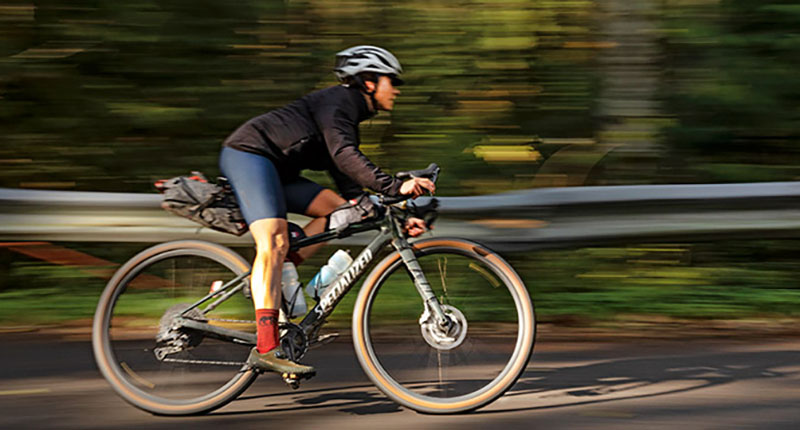Lael’s Bike
Riding with Lael Wilcox, I was impressed not just by her speed and positive attitude, but also by her efficiency and planning. When we stopped at the small (and sparsely stocked) store in Index, I was still surveying the shelves when Lael was already checking out, having snagged the only sandwich, something to drink and a chocolate bar. I realized that her success in long-distance events comes down to not just one factor, but optimizing every aspect of her rides. The same applies to her bike. She rides it incredibly well, both on smooth pavement and on rough gravel. She dances up steep climbs and flies down twisty descents. Here’s what she says about her bike and equipment. —JH
The ride comes first, and I’m always looking for the best bike setup to support it. To start turning dreams into reality, I make plans on paper. I often take a blank calendar and fill in the next six months with as many riding dreams, races and outreach projects as I can fit. If I can ride from one to the next, I do. I love when timing and place connect, and I love seeing everything along the way. It keeps me going.
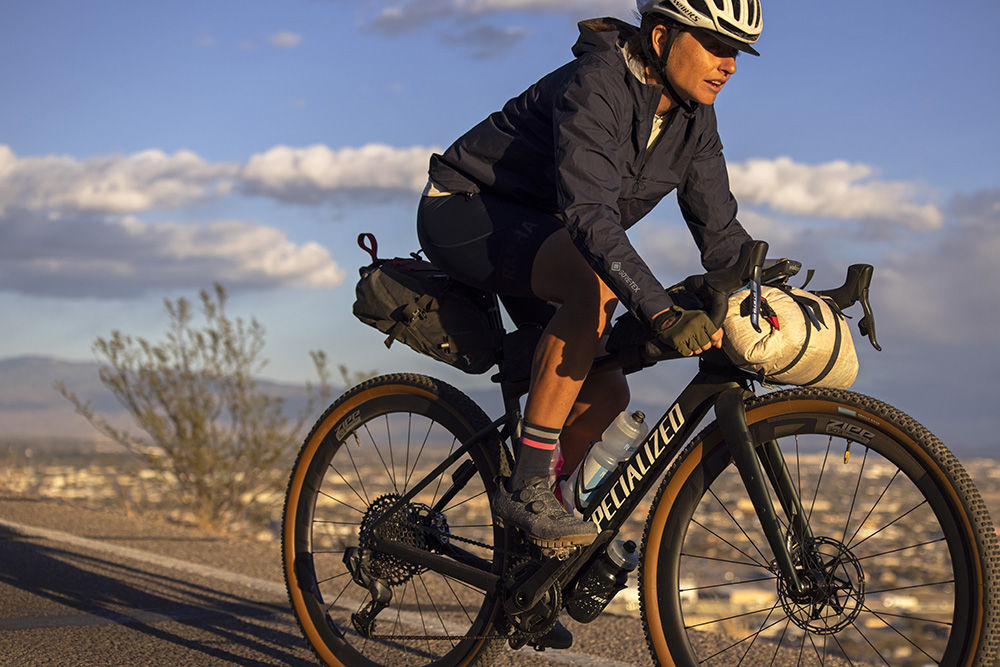
I carved out the summer months of 2017 for my project of riding all of the roads in Alaska. My plan was to take on different sections in one- to two-week stints and come back to Anchorage in between to work at The Bicycle Shop to fund the next stretch. I’ve been riding Specialized bikes since 2015 and look to their line up of bikes to see what will best support my races, adventures and dreams. I’d ridden paved roads in Alaska on my mom’s old Specialized Ruby, a bike designed for endurance road riding. I won the Trans Am on a newer Ruby in 2016. Coming back to Alaska, I knew I’d be riding an equal split of dirt and pavement. I didn’t know the quality of the roads because I’d never seen them. I expected they’d be pretty well-maintained as they are major travel routes to connect the remote limbs of Alaska with the larger hubs, junctions and the two border crossings into Canada. In 2017, Specialized came out with a new model of the Diverge that came stock with 700×38 tires and the Future Shock – 20 mm of suspension just above the head tube, designed to eat up rough roads. I got my bike the day before I set out on my first leg of the trip. I strapped some bags and a small tent to it and started pedaling north to Deadhorse, riding just under 1,000 miles [1,600 km] over the next week via Hatcher Pass, my folks’ cabin in Willow, and a 92-mile detour into Denali National Park. I loved it.
Over the summer, I rode that bike into the ground, pedaling every road in the state. I sent it back to Specialized in the fall, so they could see how it fared. My mechanic friend Madeline eventually rebuilt the Diverge with a flat bar and gave it a second life. I’ve spent a good deal of time on subsequent Diverge models – guiding in Southern Arizona with The Cyclist’s Menu, riding from Boulder, Colorado to Emporia, Kansas to the start of DKXL in 2019, from LA to Yuma, and many more miles in Alaska.
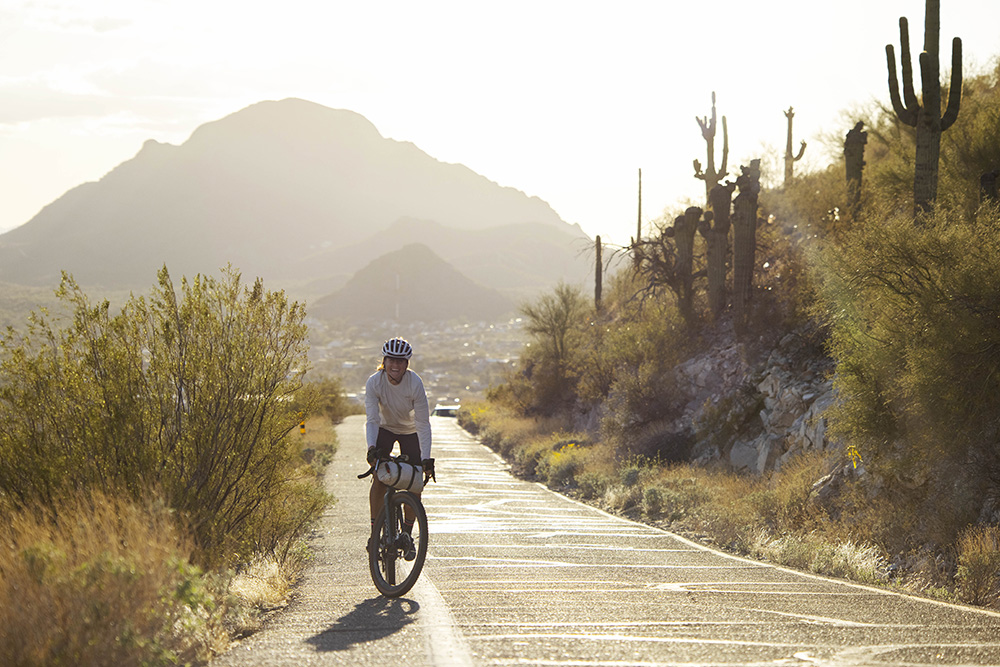
I went back to Alaska for the summer of 2020 to ride the roads with Rue and make a video. Specialized came out with a new Diverge, and this one has muscles. It’s a bit stouter with tire clearance of up to 700×50. It’s a more capable machine for rougher roads, but I don’t feel compromised when I’m riding it on pavement, either. For me, ultimately, it’s better for a wider mix of terrain. I’ve recently had this bike fully rebuilt with SRAM components.
Last week, I went out to tour a 132-mile loop in Southern Arizona over three days with Rue. The route is a combination of high-quality dirt roads, washboard, chunky jeep roads and cracked pavement. Then I went back and rode the whole route in a day. My Diverge was a perfect setup for the both the tour and the challenge – equally ready to travel or race.
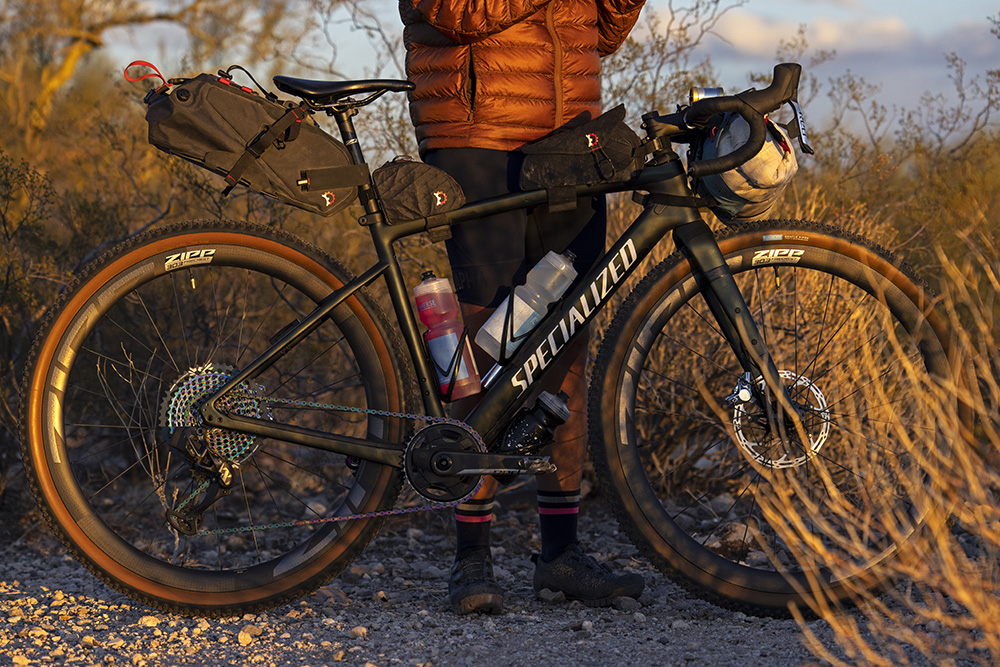
Here are a few favorite aspects of my Diverge:
—1x SRAM drivetrain with AXS electronic shifting and a wide range Eagle cassette (38T chainring, 10-50T cassette). With only a rear derailleur, shifting is mentally simple and seamless. I originally had this bike set up with Shimano GRX Di2 which also worked well. I prefer the wider range of gears of the SRAM setup.
— Dynamo lighting: a SON hub paired with a Sinewave Cycles Beacon headlight. I like generator lights because they’re consistent and always available. I like that I can charge my electronics out of the Sinewave headlight, but I’m also thinking about trying an Edelux for a better beam pattern at moderate and high speeds..
— Rene Herse Oracle Ridge 700×48 knobbies with Endurance casing. I keep them on all the time because they’re fast and capable on both dirt and pavement. And they are practically silent. The larger-volume tires are the most significant upgrade for the new Diverge.
— I use a Wahoo ELEMNT Roam for navigation and a Quad Lock mount for my iPhone.
— Hydraulic disc brakes: consistent, powerful braking in all conditions.
— The Future Shock is really nice for rough terrain and washboard. I can comfortably descend at greater speed than I would on a fully rigid bike.
— Easton AX 70 carbon handlebars: I’ve used these bars on multiple Diverges and my Specialized Epic HT that I raced for the DKXL and the Tour Divide in 2019. They have a minimal flare and are very comfortable.
— Ergon SR women’s road saddle. I use this saddle on every bike. It has a little cushioning and a great shape.
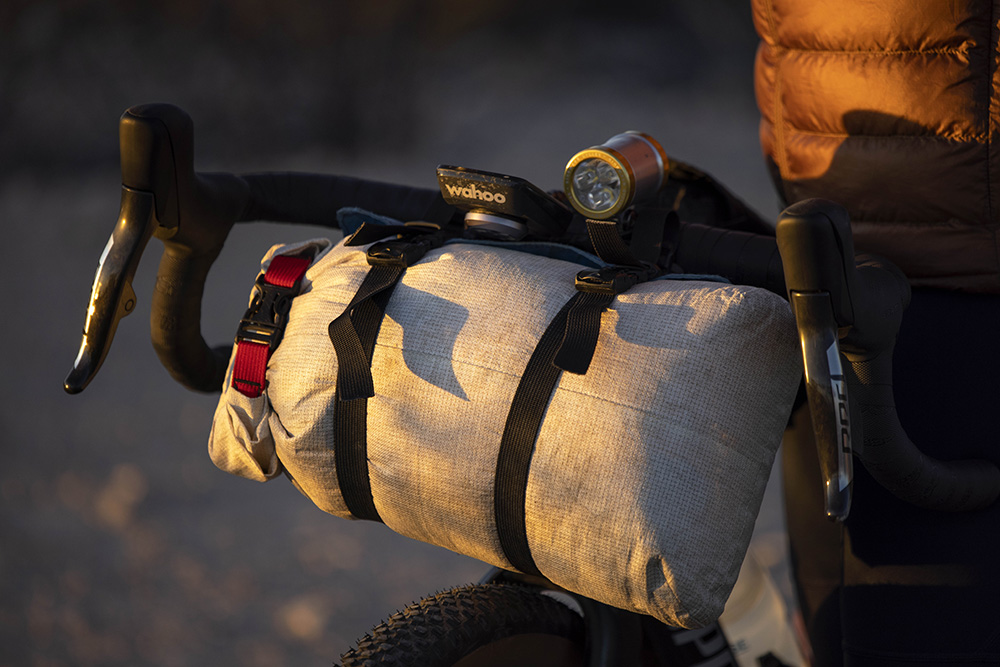
— Revelate Designs luggage. Both the Pronghorn Handlebar system and the Spinelock seat pack are waterproof and do not sway. In the past, I’ve almost always relied on framebags to carry equipment. It’s nice to carry heavier gear (tools & food) low and central to the bike. I usually put a spare tube in the little corner close to the bottom bracket and build up from there. If I need to carry a bladder with 2 – 6 liters of water (like on the Baja Divide), the framebag is a good place for it. Not all framebags are designed and built equally – I particularly like the Revelate Designs ones. They are typically a bit wider and flare towards the handlebars for larger capacity. This shape does not work for all riders, as some people with a narrower pedal stroke have problems with their legs rubbing on the bag. The RD framebags have also been improved with oversized zippers and stretchy material on either side of the zipper to make them more durable. This change happened in 2014 – before that, I would break zippers after about 3 months of touring. I haven’t had problems since the design change.
If I’m out for a trip where I need capacity for multiple days of food (like touring the Dalton Highway in Alaska with Rue last summer), I usually rely on a framebag. Another added benefit is that I can access the bag easily while riding (to store layers, equipment or grab a snack).
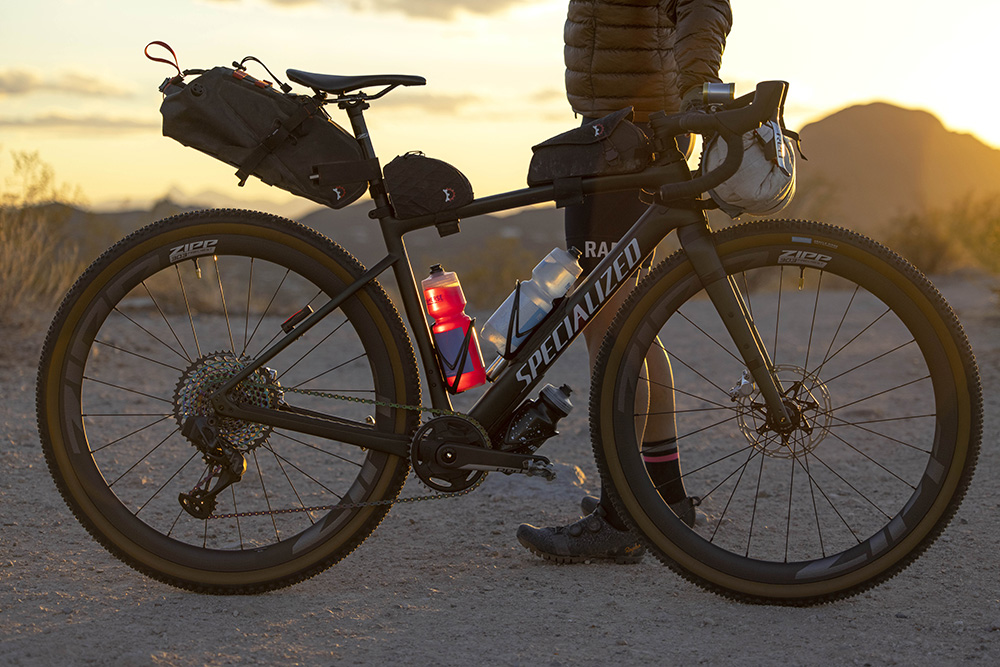
I frequently change my bag set up because it feels liberating to mix it up. Lately, it’s felt really nice to keep the frame open for bottle cages and water bottles. Without this space, I have to find other solutions for water. In the past, I’ve used various solutions, including feedbags and a hydration backpack. These all work. Sometimes, a hydration backpack is the best solution for mountain biking, because the suspension takes over a lot of the frame space, and it’s also easier to drink while riding on rough terrain (to avoid taking my hands off of the handlebars to grab water bottles and put them back in the bottle cage). Most of the time, I prefer having water in normal bottle cages in the frame.
That’s the bike I’ve been riding most of the time lately. I does what I want to do and takes me where I want to go.
Photo credits: Rugile Kaladyte


